10 Amazing Things You Can Do With Long Exposure
Star trails, soft streaky clouds, silky smooth water. What do all of these images have in common?
If you guessed a long exposure time, you’re right. Long exposure photography is the art of using a slow shutter speed (long exposure) to capture the cumulative effects of time passing – in one image. This technique allows you to capture clouds as they travel across the sky or the lights of traffic as they move along the highway.
Long exposure photography is addictive! This technique offers rewarding results – images that are unique and artistic. While perfecting the art of long exposure takes a bit of practice – and a lot of trial and error, the results are worth it.
Are you ready to get started with long exposure? Read on to see ten amazing things that happen when you slow your shutter down.
Star Trails

photo by Joe Parks
Long exposure is often used at night to create breathtaking photographs. One of the best-known examples of long exposure photography is star trails. For star trails, you’ll need a tripod, a remote shutter control, and time –lots of it! Depending on how long you want the star trails to be, you’ll also need Photoshop or similar post-processing software. Your exposure time for star trails can be anywhere from 30 seconds for relatively small trails, to several minutes or even hours for much longer trails. However, keep in mind that the longer your exposure is, the more “noise” you will get in your photos. This is where Photoshop comes in. You can help to minimize noise by taking multiple exposures and then blending the images in layers in Photoshop. This technique has resulted in some amazing photographs of the night sky that we wouldn’t normally see.
For an excellent tutorial on star trails check out How to Photograph Star Trails From Start to Finish.
Picture Perfect Fireworks
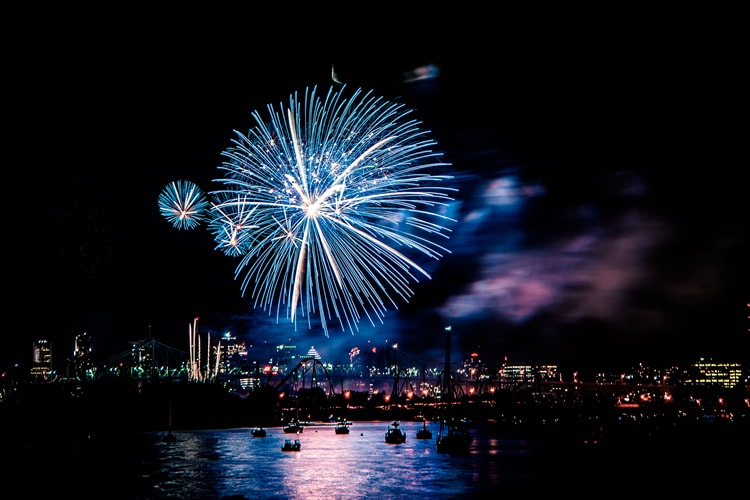
To get started with fireworks, turn off your flash and set your camera to manual. This allows you to control the exposure and aperture yourself. A good place to start is setting your aperture to f/11, at 1/2 second shutter speed and the ISO at around 100. If the photos are too dark, adjust the shutter speed while keeping the aperture the same. Another idea is to shoot in ‘bulb’ mode. This mode is found on most cameras’ shutter speed settings. Bulb mode lets you keep the shutter open for as long as you hold down the shutter. This technique allows you to press the shutter when the firework explodes, and hold it until it’s done.
Using a longer exposure will create longer lines, and better-looking photographs. As with any long exposure photography, don’t forget to use a tripod, and preferably a remote release, to help minimize shake.
Paint With Light
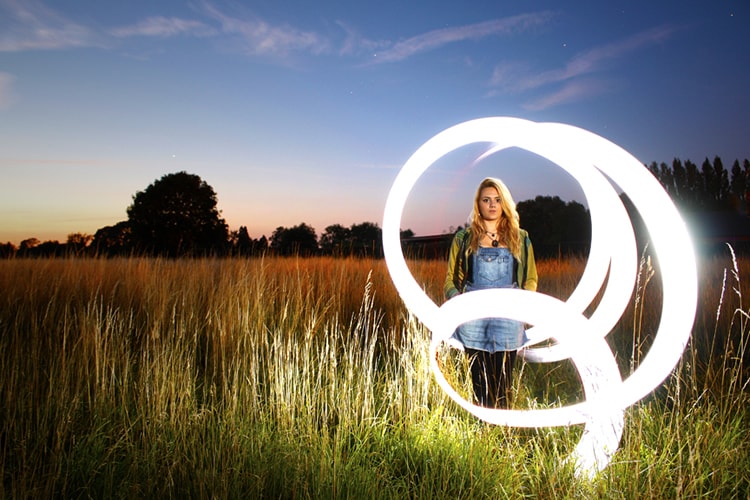
photo by Brian Tomlinson
Painting with light is easily accomplished with a long exposure. All you need is a dark location and friends holding flashlights or glow sticks. Using a long exposure and tripod, you can capture your friends drawing shapes or writing in the dark. For camera settings, try setting your aperture to f/11, your ISO at 100, and your shutter speed between 11 and 30 seconds. For a longer exposure, you will want to switch to bulb mode. Light painting is a combination of science and art, and something to have fun with.
Here is an excellent tutorial on light painting.
Smooth Out Water

photo by Luke Price
We’ve all seen images of the ocean that feature a beautifully smooth, silky blur. The technique that’s used to capture that silky-smooth effect is called “motion rendition,” and is achieved by using a slow shutter speed. Use a tripod, and a long exposure for blurred water – the longer your exposure, the more ‘velvety’ your water will be. Streams and rivers usually require shutter speeds of around 1/15 through 1 second for blurred effects, while the ocean will require slower speeds – usually between 5 and 30 seconds.
Ferris Wheels
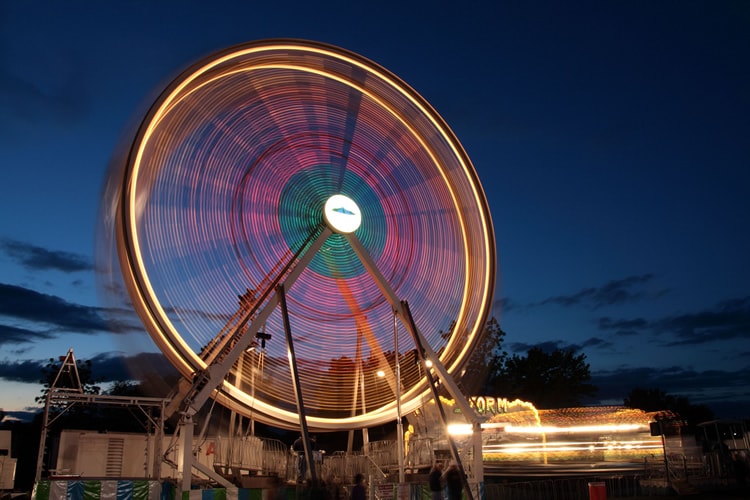
photo by Brock Roseberry
Capturing a Ferris wheel in motion is one of the more popular uses of long exposure. To capture a moving Ferris wheel at night, set your camera to manual mode, and use a long exposure between 1 and 30 seconds – depending on the speed of the Ferris wheel, the lighting, and the style that you are looking for.
Traffic Light Trails
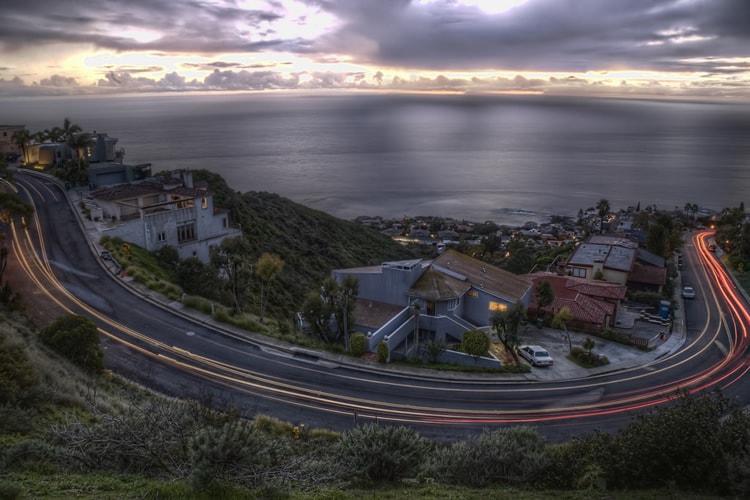
photo by Neil Kremer
Traffic light trails are another popular example of long exposures. All you need is a source of constant light -such as a busy street, a tripod, and some patience. Use your tripod, and set your aperture to f/16 or smaller so that most of your image will be in focus. Start with your shutter between 10 and 20 seconds, and adjust as needed. The longer your exposure is, the longer the lines will appear.
Lightning
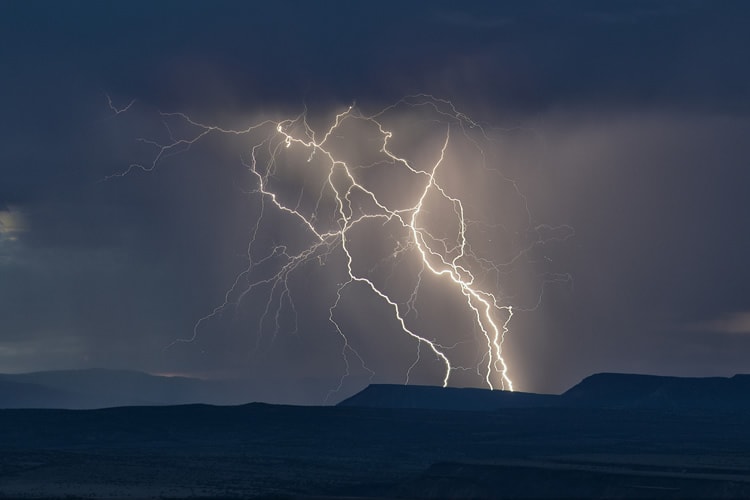
photo by John Fowler
Lightning is unpredictable -and infamously challenging to photograph. In order to get a decent photograph, you’ll need to be ready and waiting, and a few steps ahead! With lighting, you don’t know when it’s going to strike, so it will take some guesswork to know when you should release the shutter. Start with an aperture of about f/8, ISO at 100, and a shutter speed of 15 to 30 seconds exposure. Always use a tripod for shutter speeds that are this slow. If you’re lucky, you may even capture multiple lightning bolts – and striking photographs!
Stunning Sunrise or Sunsets
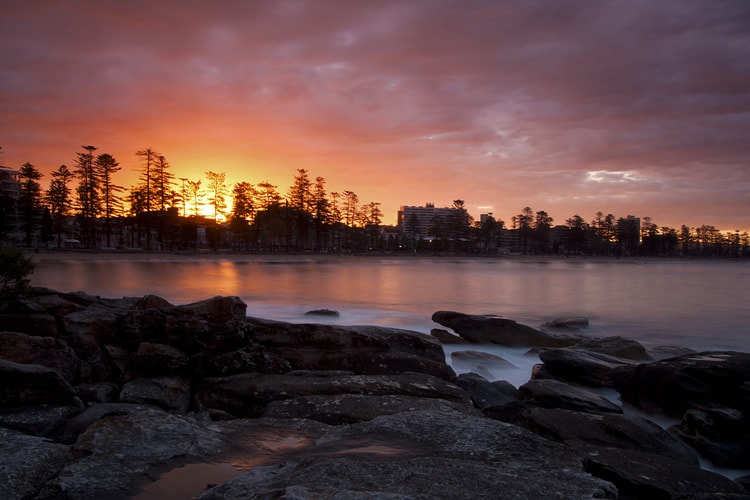
photo by Nigel Howe
Sunsets and sunrises are perfect opportunities to use long exposure. Long exposure during golden hour -the hour before sunset, can create some amazing and dramatic images. For beautiful long exposure sunsets, use a tripod and a wide-angle lens if possible, and set your camera to manual or bulb mode.
Then use a slow shutter speed between 5 and 30 seconds. The longer your shutter speed, the more blurry the water will be.
Capture Moving Subjects

photo by Grand Parc – Bordeaux, France
Panning is a great way to capture photographs of subjects that are in-motion, allowing you to keep the subject in focus while blurring out the background into abstract lines. To pan, focus on the subject then track with them while they move before releasing the shutter. Your shutter speed will depend on the speed at which the subject is moving, how much light there is, and the distance between your subject and the background. A car may require a faster speed of 1/250 of a second, while a dog running may require you to slow it down to 1/40.
Boost your Reflections

photo by Emmanuel Huybrechts
Drawing out your exposure time will smooth out ripples in the water and create silky, slightly blurred reflections. Beautiful! For blurred reflections, use a tripod, focus on the real image instead of the reflection for the sharpest results, and use a slow shutter speed.
For long exposure photography, you also want to invest in a sturdy and reliable tripod as well as in some neutral density (ND) filters. With long exposure, a lot of light will reach your camera’s sensor, and ND filters can help to cut back on overexposed images.
Have fun, and happy shooting! Don’t forget to share your photos with us via Twitter or Facebook.
